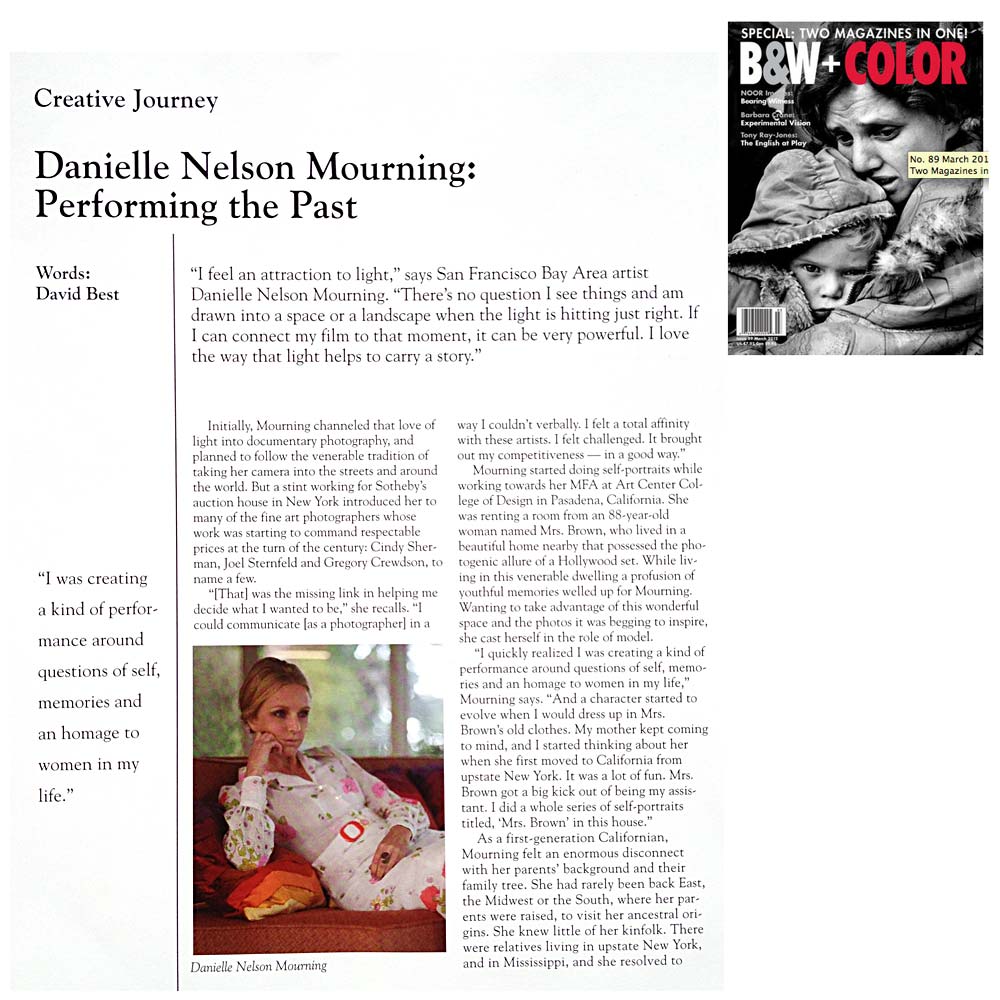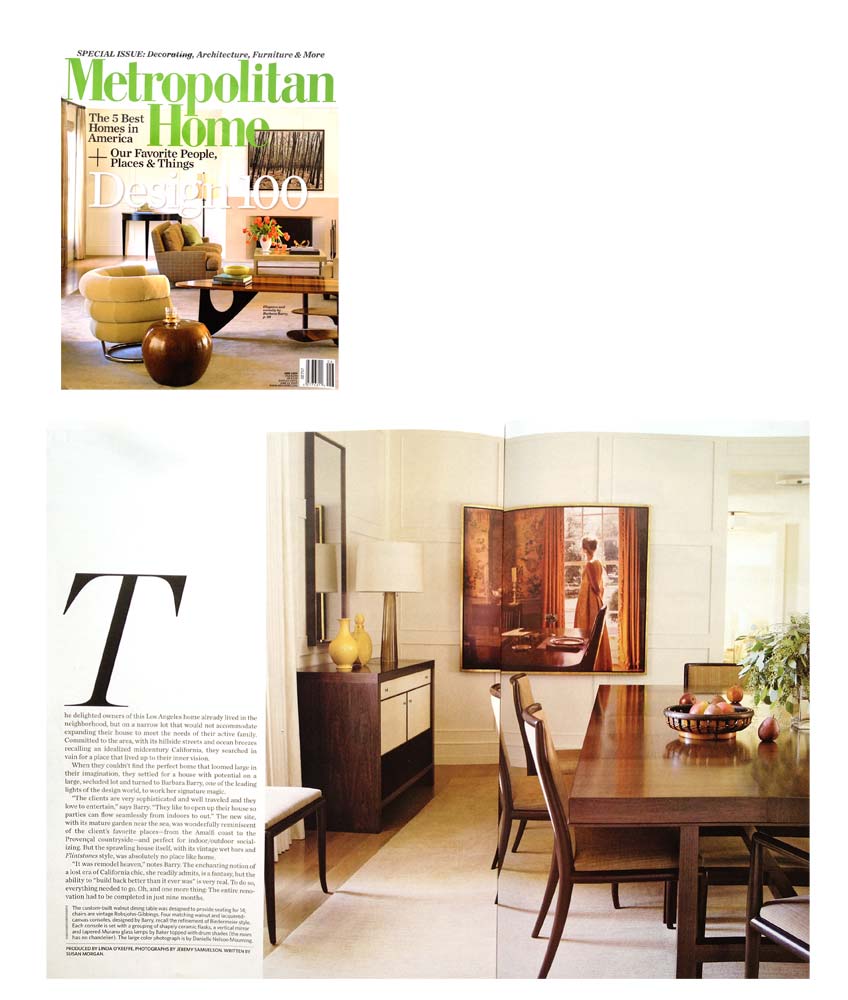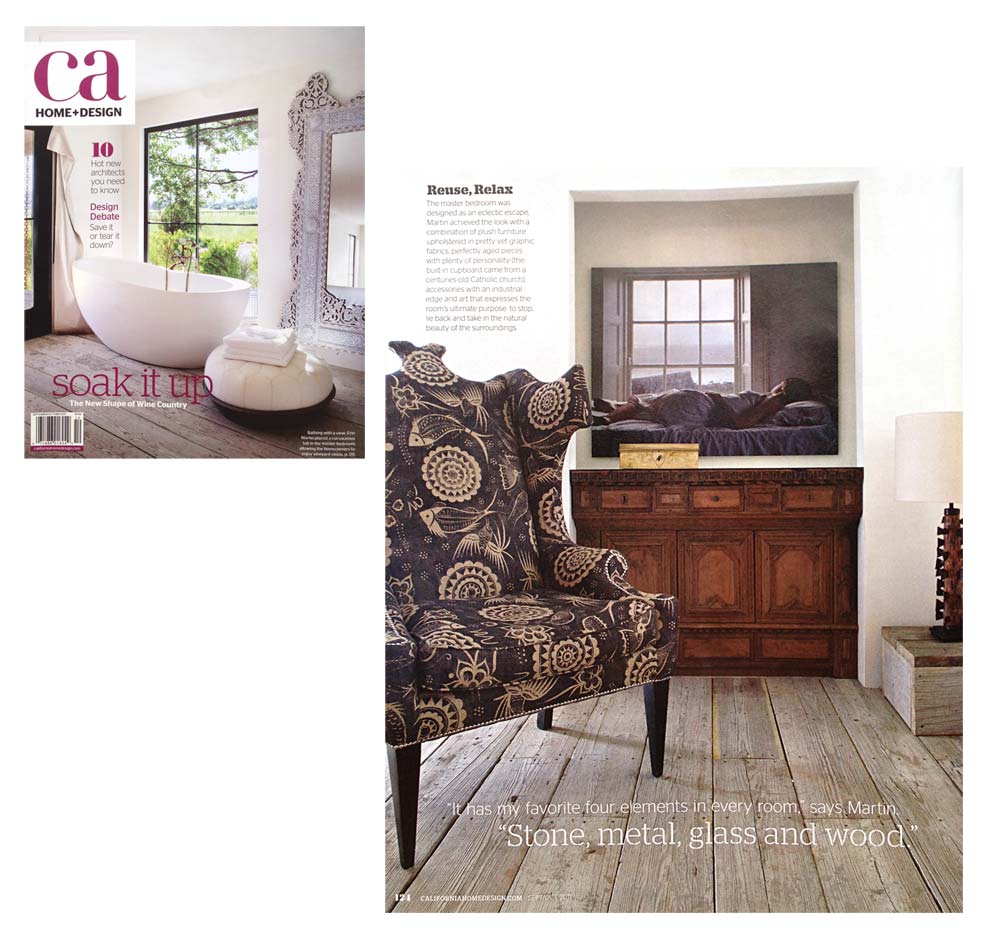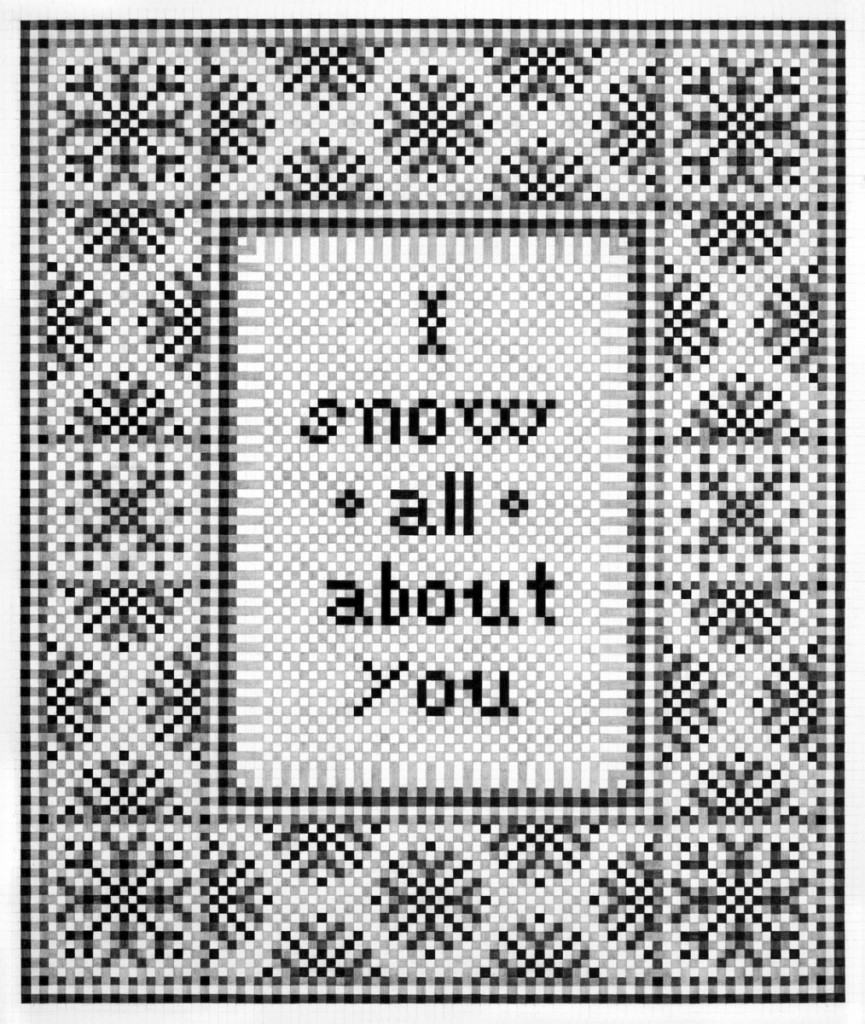Danielle Nelson Mourning featured in B&W+COLOR magazine, March 2012.
Archive for January, 2012
DANIELLE NELSON MOURNING: B&W+COLOR
Wednesday, January 18th, 2012DANIELLE NELSON MOURNING: Metropolitan Home
Wednesday, January 18th, 2012DANIELLE NELSON MOURNING: CA Home+Design
Wednesday, January 18th, 2012RECRAFTING HISTORY: history, nostalgia & craft in the American memory, curated by Ellen Caldwell
Thursday, January 5th, 2012RECRAFTING HISTORY: history, nostalgia & craft in the American memory
curated by Ellen Caldwell
October 29 – December 22, 2011
“Cultural memory is produced through objects, images, and representations. These are technologies of memory, not vessels of memory in which memory passively resides so much as objects through which memories are shared, produced, and given meaning.”
– Marita Sturkin, Tangled Memories
Artists Eric Beltz, Jen Pack, Karen Spector, Frohawk Two-Feathers, and Stephanie Washburn all speak to Sturkin’s concept of a shared history and entangled cultural memory. Exploring our modern world through a recrafted lens, they create fictitious, re-envisioned, nostalgic, and comical memories and renderings of the past and present. Negotiating themes ranging widely in subject and medium, each artist in Recrafting History answers the question, how do we exhibit histories that we don’t talk about? In experiencing their art, we as viewers, are welcomed to explore the deeper themes that trouble the American psyche and collective American memory.
With Eric Beltz’s series of graphite-drawn needlework, Beltz calls the concept of Americana and nostalgia into crisis, by recrafting traditional female work (often considered lowbrow), into male-made High Art (with a capital “A”) for the gallery wall. He appropriates the aesthetic of the craft, but changes the medium and technique, at once reviving and altering the tradition. Additional textual messages tangle and trouble the subject further.
Built of chiffon, thread, and wood, Jen Pack’s Green Bikini and (k)not Entangled use a deconstructed and reconstructed medium to create a dialogue between the viewer and art. Her work, though built from the same materials, takes on a transformative air in the final products’ drastically different forms and functions. And her seemingly disjointed titles are about displacement, and the eternal struggle that comes from deconstructing and reconstructing one’s identity on an ongoing basis.
In Surplus of Light, Karen Spector situates the viewer in an endless video loop that taps into and oscillates from a national post-9/11 fear and insecurity, to a ridiculous feeling of lavishness, abundance, and wealth (found in the extravagant display of fireworks), to a looming uncertainty questioning and undermining American monumentalism and ballsy patriotism. The reversed anthems are a type of siren song, hovering and looming in the soundtrack as both celebratory and foreboding.
With Frohawk Two-Feathers’ latest installment of the saga of the Frenglish Empire, viewers become part of an exchange between cultural memory and history—between the fictitious Frenglish Company Crocodile and our world, with reality being somewhere in the middle. His work focuses mainly on the conflict arising from European colonial conquest, though it is shown predominantly in America, thus forcing American audiences to view this work, and this imperialist retelling, as culturally and historically relevant.
Stephanie Washburn’s Margaret Thatcher’s Garden, offers a sneak-peak into the intimate domestic space of a political body. Through her musings of this imagined realm, we are not just in the midst of a physical interpretation of an exterior location, but are also conceptually in an interior realm of Thatcher herself. Through something as concrete as a garden, we can re-imagine the historical setting for actual political decisions, while also envisioning Thatcher’s internal, private space of contemplation away from the public eye.




